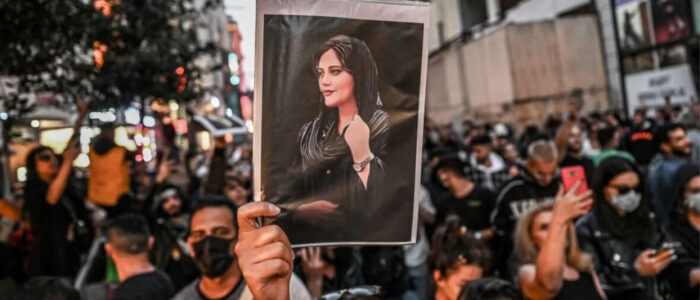Following widespread protests post the death of Mahsa Amini, Iran has finally abolished the country’s morality police and agreed to review its hijab policies. On 16 September 2022, a 22-year-old Iranian girl was found dead in captivity after the morality police force detained her on account of not wearing her hijab properly. According to the Iranian media, Amini died of natural causes and had prior health conditions, while her parents maintained that she was fit and healthy before the incident. The tragic death has caused massive outrage and anger across the country. Consequently, Iran has agreed to take the enormous step of reconsidering its Hijab Laws.
Since the Islamic Revolution of 1979, it has been obligatory for women to wear the hijab in Iran. The country’s morality police, called Gasht-e-Ershad (guidance patrols), have prowled the streets in vans, detaining people wearing “unsuitable” clothing. However, millions of Iranian women actively oppose the hijab. In fact, opposition to the enforced hijab was almost immediate. Initially, throughout the revolution in 1978–79, headed by Ayatollah Khomeini, the hijab became a symbol of resistance against the monarchy of Mohammad Reza Shah.
The hijab maintained an essential place in the power dynamic between society and the ruling Iranian regime. The Pahlavi regime of the Shah and his predecessor had attempted to revolutionise the country, but its strategies clashed with the religious beliefs of a significant part of the population. Publicly wearing a hijab became a symbol of protest and harmony against the kingdom, regardless of how pious a woman was. However, wearing a veil was not demanded by the protesters, nor was the claim driving the revolution. In 1979, when the Iranian Supreme Leader Ayatollah Khomeini stated that women should observe Islamic dress codes, there were fiery protests, leading the administration to declare that his comments were merely a recommendation. In 1983, it was passed into law.
Iran’s Attorney General Mohammad Jafar Montazeri stated that the Iranian parliament and law-making bodies were reviewing the mandatory hijab law.
In 1985, it became compulsory for women to wear the hijab, with a law that required all women in Iran, notwithstanding their religious beliefs, to dress according to Islamic teachings. The hijab became a tool for implementing the government’s strict religious beliefs. Since then, there have been periodic protests against the hijab, culminating in the recent burning of headscarves the world witnessed.
After Mahsa Amini’s death, women took to the streets, cut their hair and burned their hijabs. The protest spread worldwide, and women have been sharing footage of cutting their hair in solidarity with Amini. School girls have also been participating in the protests, with men joining them alongside. The protest has been escalating, and clashes between security forces and protesters have killed over 250 people, including children, with more than 1000 being detained. The rallies also reflect resentment towards social repression and Iran’s religious establishment.
As the recent demonstrations spread worldwide, Unites States President Joe Biden also showed his support for the protestors in Iran. Ayatollah Ali Khamenei, Iran’s supreme leader, thus blamed the United States for the unrest in Iran, accusing the foreign countries of trying to stop Iran’s progress. The Iranian government has been trying to disperse protests by internet shutdown, rubber bullets, tear gas, and live ammunition. Iranian police have fired into people’s homes, detaining activists, students, and journalists. Ayatollah Ali Khamenei has described the protests as uprisings intended by the United States and the Zionist regime and termed them enemies of the Iranian Islamic revolution.
As the death of Mahsa Amini has unleashed a nationwide flood of protests over human rights, security, and an economy whirling from international sanctions, it has also ignited the debate about women’s rights in Iran. Therefore, as the violence faced by women has come to public attention, immediate measures concerning the compulsory hijab law and other ideologies obstructing women’s freedom need to be taken to stop any further incidents.
Eventually, on 1 December 2022, Iran’s Attorney General Mohammad Jafar Montazeri stated that the Iranian parliament and law-making bodies were reviewing the mandatory hijab law. He also explained that Iran’s morality police were being abolished. However, the state media source questioned the latter comments maintaining that the morality police were under the interior ministry and its abolishment is not for the judiciary to decide. Nevertheless, the much-debated hijab laws have been finally put under review as demanded by the protestors. Time will tell how successful the masses will be in getting their demands fulfilled and how successful the state will be in reinstating peace on the streets.
